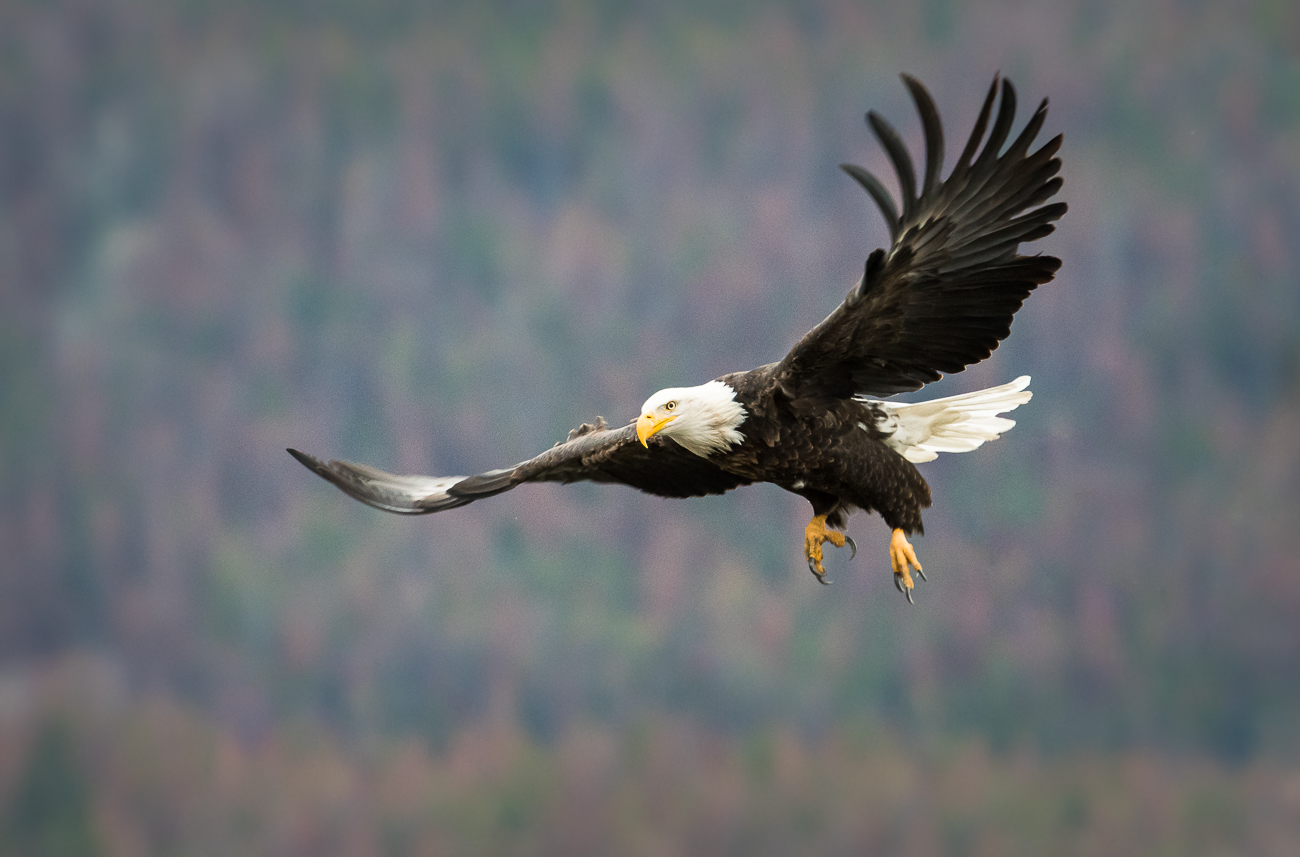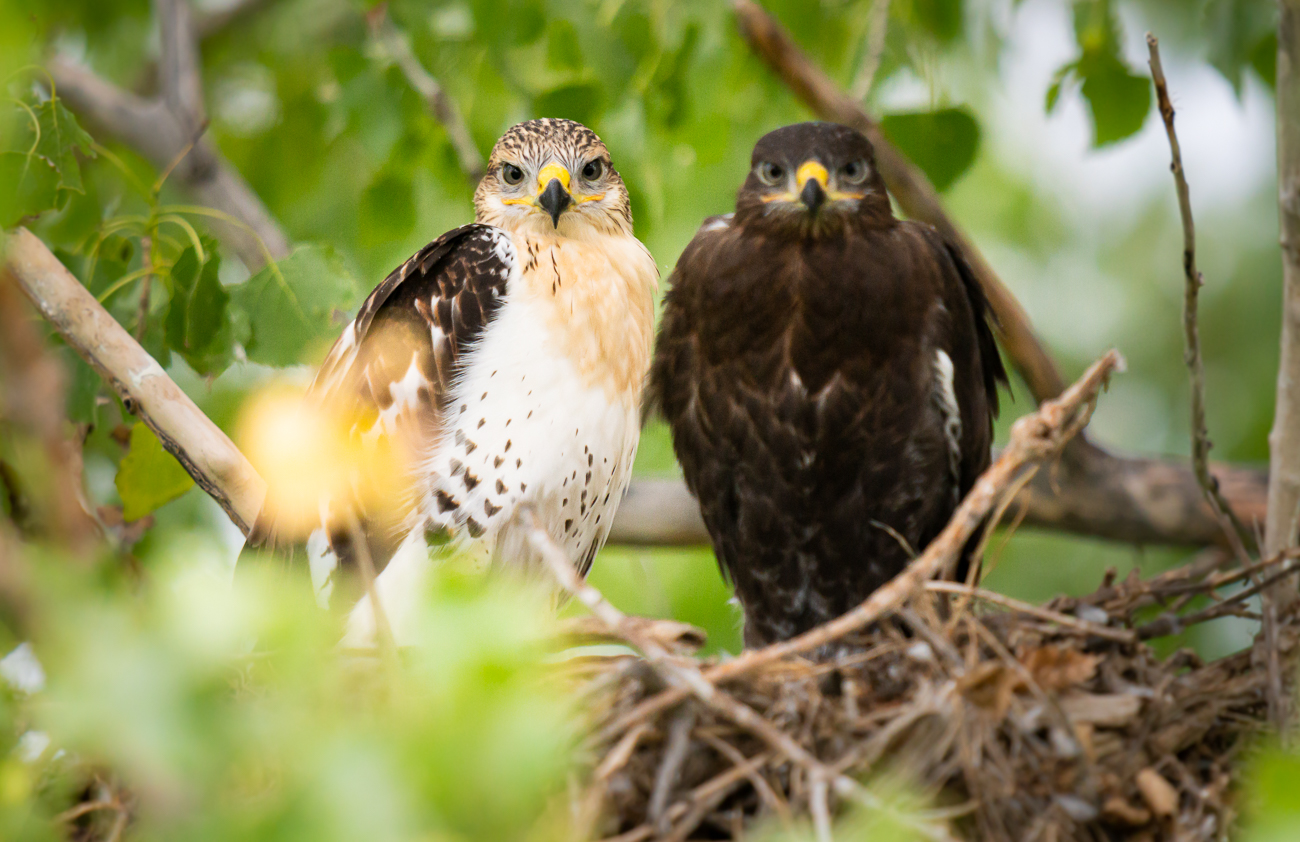We Don’t Know What We Don’t Know
Chapter Three
How can we sustain fragile populations of wildlife?
“You need to have genetic diversity in the population, or populations, to be able to withstand diseases and different environmental influences.”
Exactly, scientist Laura Kennedy. And to do that?
“Connectivity is also important so you don’t get these population sinks. So, (sinks are) areas where animals are moving into that can’t support the populations and, so, they die off. If you have connectivity (between habitats), then you’re not going to have one single area that is just going to be a population sink.”
What Laura just explained is now globally accepted science and informs biodiversity policy just about everywhere. The man who made that so? Canada’s own Harvey Locke.
“Widespread use of radio collars on animals started to show us that the scale (of movement) was much bigger than we used to think.”
 Harvey now advises governments around the world on how best to safeguard biodiversity. And his best advice to government ministers – protect corridors – stems from lessons he learned in Canada’s Rocky Mountains.
Harvey now advises governments around the world on how best to safeguard biodiversity. And his best advice to government ministers – protect corridors – stems from lessons he learned in Canada’s Rocky Mountains.
“Banff National Park in the Canadian Rockies protects a portion of wolf habitat. But we learned that the wolves in the Canadian Rockies are actually going all over the place. They’re going all the way down into the United States, and they’re going all the way up to mile zero of the Alaska Highway. And it’s the same basic family of wolves that have all the same genetics across this huge scale. They have to stay connected.”
If a population is cut-off from the larger species – or its ability to move to find a mate and reproduce is hampered – it stands to reason that specific populations or, in some cases, entire species, will lack a diverse gene pool.
Think about it this way, Harvey explains:
“The Rocky Mountain parks together have a viable population of grizzly bears. The Rocky Mountain parks individually do not. But that viable population needs genetic connections north and south to remain genetically robust over time so population pressures don’t result in inbreeding and things like that.”
It’s why ethicist Dr. Kerry Bowman tells us, “Corridors are happening all over the world and they’re the best bet that we’ve got (for safeguarding biodiversity).”
Kerry’s right. Corridors sustain the broad genetic health of a species. But each sub or regional population of a species – say grizzlies in Mount Robson – can only act as a genetic link in the larger corridor if that smaller population of animals has a sufficient diversity of breeding females, first and foremost.
Right, Sarah Ramirez?
 “The biggest lesson for me in learning that was actually an old bald eagle. She had been electrocuted. And she had a metal band on her legs so we were able to figure out where she came from. And it turns out that she was 34 years old. She was the third oldest bald eagle ever found in the lower 48 (United States), and the oldest one west of the Mississippi River.”
“The biggest lesson for me in learning that was actually an old bald eagle. She had been electrocuted. And she had a metal band on her legs so we were able to figure out where she came from. And it turns out that she was 34 years old. She was the third oldest bald eagle ever found in the lower 48 (United States), and the oldest one west of the Mississippi River.”
Sarah Ramirez is a raptor biologist and a raptor rehabilitation specialist. And though you may have heard – or will hear – parts of this story, it’s important context for this conversation.
As Sarah continues, “Back when she was hatched as a chick, the bald eagle population was not doing well. In the lower 48, we had dwindled that population to essentially the population that was in the Teton Valley, the Yellowstone and Grand Teton National Parks area. So, when she hatched, (it was) at a really important time for her species. And at age five, she was able to start having chicks of her own.”
That eagle? Sarah says it’s proof and point as to why breeding females matter to the genetic health – the very future of – a species.
“Bald eagles can have two-to-three chicks per nest every year. So, at the brink of their extinction, we have this beautiful, big, female bald eagle that for 29, 30 years has bred and has put out 2 to 3 chicks every single year. And it’s thought that the bald eagle population (in the United States) rebounded back from the population (around Yellowstone). So, it’s incredible to think about not only did she have all of those chicks, but those chicks had chicks five years later, and then those chicks had more chicks. Her genetic influence on bald eagle recovery is astounding. That one individual, she had a huge hand in bringing back that population.”
It’s why Sarah believes there isn’t one, best way to approach species-focused, scientific inquiry. She tells us we must learn from different perspectives.
“Field biologists might look more at the bigger population (and) maybe don’t find value in the individuals. And some people that look at the individuals maybe don’t find the value in studying all those populations or they don’t feel the worth from it.”
What she’s learned?
“Combining both (approaches) is the only way to tackle a crisis like this (biodiversity). I think we need multidisciplinary reactions to these things. We need to take a look at all the different points to be able to save these populations and bring them back.”
For Sarah, that belief isn’t limited to scientific research, but also applies to solution making.
 “We need to try things and get creative and figure out if nesting platforms are going to keep our hawks nesting in a really high disturbance area. And maybe baling twine, if we change the colour from orange to black, maybe osprey won’t use it in their nest and get totally tangled in it. I do think that we can find easy fixes to help these species keep doing what they’re doing and have us keep doing what we’re doing.”
“We need to try things and get creative and figure out if nesting platforms are going to keep our hawks nesting in a really high disturbance area. And maybe baling twine, if we change the colour from orange to black, maybe osprey won’t use it in their nest and get totally tangled in it. I do think that we can find easy fixes to help these species keep doing what they’re doing and have us keep doing what we’re doing.”
After all, Sarah says, “I do believe humans are going to keep doing what we’re doing anyway. For me, we need oil. I use it in my car to get to my field site. So, if they’re going to be there anyways, I want to be that person who’s fighting to figure out how can we have both species there while using the landscape?”
Maybe that approach works with some species – like hawks – and not others – like caribou. Or maybe we just think it won’t work with caribou because we haven’t unleashed our creativity yet. No matter, Sarah says. We can only answer these questions – we can only understand what we don’t know we don’t know – when we put the effort into asking the better scientific questions.
“I think sometimes when we blunder through without all the information, we end up doing more harm than good. We find ourselves trying to backpedal and hoping that we can rectify the situation.”
When we seek to understand unique genetic traits – why they evolved and how they help drive ecosystem functions – we can begin to understand the role and value of different organisms.
It’s why Sarah argues, “The more information, the better. And it really comes down to the basics of everything is very interconnected. A moss study could have a huge impact on human health because it’s connected to the bat population which is taking care of a rabies vector. Everything ends up being so interconnected. With more research, we learn how interconnected we are with species and how (they) affect us so much.”
Asking the bigger, better, fuller scientific questions is indeed how we can uncover the whole story. But asking the better question? It doesn’t just matter in scientific inquiry. It matters in the application of scientific findings too.